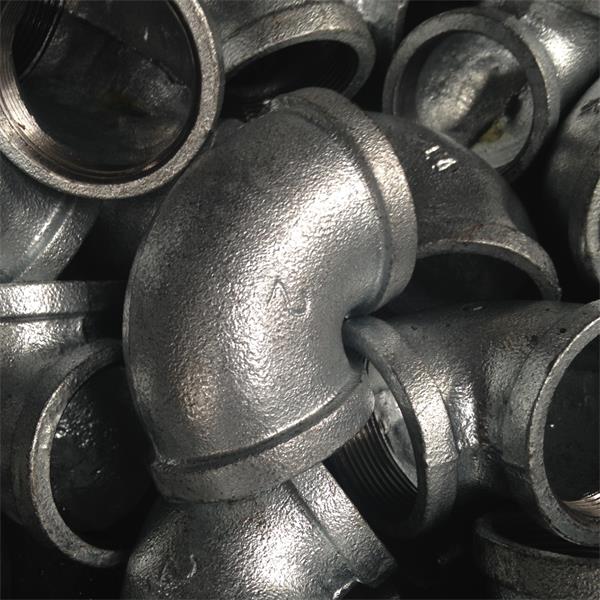
Malleable Cast Iron
Malleable cast iron is white cast iron that has been annealed. An annealing heat treatment transforms the brittle structure as the first cast into the malleable form. Therefore, its composition is similar to white cast iron, with slightly higher amounts of carbon and silicon. Malleable iron contains graphite nodules that are not truly spherical as they are in ductile iron because they are formed from heat treatment rather than during cooling from the melt. Malleable iron is made by first casting a white iron so that flakes of graphite are avoided, and all the undissolved carbon is in the form of iron carbide. Malleable iron starts as a white iron casting that is heat treated for a day or two at about 950 °C (1,740 °F) and then cools over a day or two. As a result, the carbon in iron carbide transforms into graphite nodules surrounded by a ferrite or pearlite matrix, depending on the cooling rate. The slow process allows the surface tension to form the graphite nodules rather than flakes. Malleable iron, like ductile iron, possesses considerable ductility and toughness because it combines nodular graphite and low carbon metallic matrix. Like ductile iron, malleable iron also exhibits high resistance to corrosion and excellent machinability. Malleable iron’s good damping capacity and fatigue strength are also useful for long service in highly stressed parts. There are two types of ferritic malleable iron: blackheart and whiteheart.
It is often used for small castings requiring good tensile strength and the ability to flex without breaking (ductility). Applications of malleable cast irons include many essential automotive parts such as differential carriers, differential cases, bearing caps, and steering-gear housings. Other uses include hand tools, brackets, machine parts, electrical fittings, pipe fittings, farm equipment, and mining hardware.
Post time: Oct-11-2022